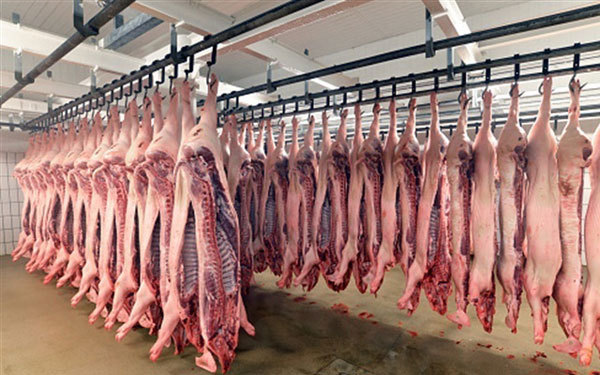Opportunities await VN husbandry sector over next decade
ABO/VNS - The outlook for Vietnam's livestock market was bright over the next ten years as the population grows to nearly 107 million with an average income of US$10,000, said Minister of Agriculture and Rural Development Nguyen Xuan Cuong.
To achieve its potential, the husbandry sector should rapidly improve its capacity to adapt to the increasing impacts of climate change, Cuong told a conference held to discuss a development strategy for 2020-2030, with a vision towards 2040, organised by the Ministry of Agriculture and Rural Development and chaired by Deputy Prime Minister Trinh Dinh Dung in Hanoi on Tuesday.
Agriculture and livestock remained a major focus for the Party, Government and localities, the minister said.
“The formulation and early promulgation of a strategy for livestock development is an urgent task,” he told the conference.
“However, this is only a common strategy for the country as a whole, and each locality will have to set their own goals. Places such as Hanoi, Dong Nai and Nghe An have said they focus on quality as well as quantity by building disease-free farms and promoting links in the animal husbandry sector,” the minister said.
Livestock should be a key pillar of the country’s agriculture sector.
The sector must re-define its development orientation with a focus on the economy, society and sustainability, and restructure products to meet the increasing demands of the market. The sector must also enhance hi-tech application in animal breeding and push exports.
In order to realise these targets, Industry 4.0 needed to be adopted combined with traditions, cultures, ecological diversity and co-operation between the State, enterprises and farmers, he said.
 |
| Pig carcasses hang at a slaughterhouse Demand for livestock products is expected to rise over the next ten years. — Photo thoibaokinhdoanh.vn. |
The livestock development strategy sets a production value target of 4 to 5 per cent from 2021-2025 and 3 to 4 per cent from 2026-2030.
Meat output will reach 5- 5.5 million tonnes by 2025, and 6-6.5 million tonnes by 2030, of which pork for export will account for 15-20 per cent, and poultry 20-25 per cent.
According to the Ministry of Agriculture and Rural Development, the sector had made significant achievements over the last 10 years by following a strategy outlined in Decision 10/2008/QĐ-TTg issued in 2008.
From 2008-2018, meat output increased 1.5 times, eggs increased 2.3 times, dairy milk 3.6 times, and animal feed 2.4 times.
A number of livestock products have gained footholds in countries in the region and all over the world.
Vietnam’s livestock enjoys a high regional and global position, ranking sixth in terms of pork output globally and second for aqua-fowl, while it is first for dairy and industrial animal feed production in Southeast Asia.
However, shortcomings remained in the husbandry sector, Cuong said.
Small-scale household farms with poor management were common which caused reduced productivity and increased production costs.
Disease and environmental management also faced many problems, including pollution.
Pork accounted for more than 70 per cent of the food basket, and the sector's rapid development was putting pressure on the consumer price index (CPI).
“Demand for other food is expanding, so we need to recalculate,” he said.
In terms of production, processing and consumption, we were only succeeding on the third stage, he admitted.
At present, modern large-scale meat processing factories are few and far between.
At the conference, experts assessed demand for domestic livestock products at home and abroad would continue to climb.
Experts suggested the Government should adopt the strategy so localities could get started.
Speaking at the conference, Deputy PM Dung recorded the achievements made in animal husbandry but asked the sector to handle any shortcomings for further development.
He also highly appreciated the strategy and asked the ministry for its swift completion so it could be submitted to the Government for approval.
(Source: VNS)
 về đầu trang
về đầu trang







